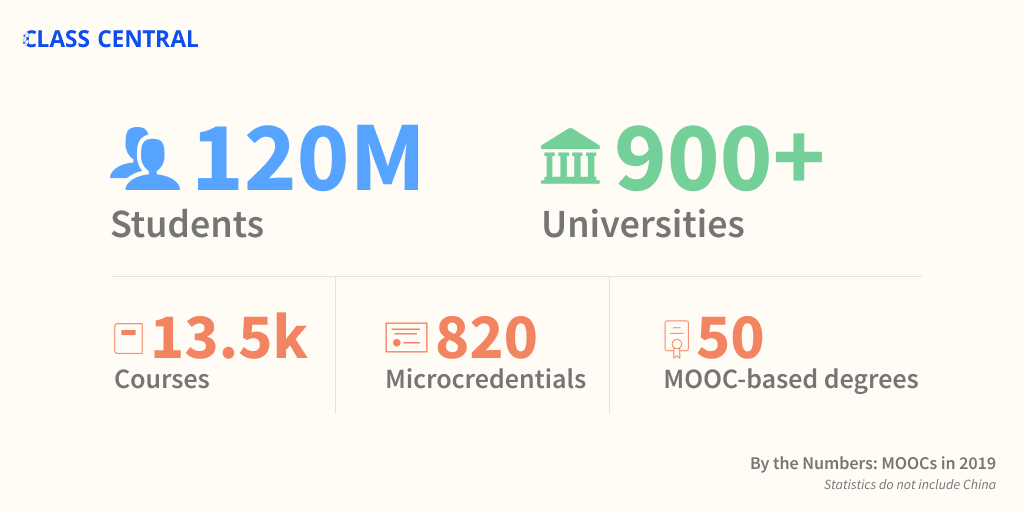MOOCs are Back — Even Though They Never Left
Coursera expected to comfortably cross $200 million in revenues in 2020, Udacity almost ran out of money in 2018, and other tidbits from recent media coverage of MOOCs.

During the last week, the New York Times (NYT) and the Wall Street Journal wrote articles about online education during the pandemic and some of these titles remind me of the MOOC hype back in 2012.
As Class Central has reported right from the beginning, the ongoing pandemic has increased interest in online education. MOOC providers, in particular, have all seen drastic growth, which reminded me of the Year of the MOOC.

We ourselves have seen over 10 million users since mid-March.
For some reason, NYT characterized this as MOOCs coming back from the dead. But you can read my end of the year report to see how the industry is doing as a whole. To recap, by the end of 2019, 120 million students around the world had signed up for at least one of the 13.5k courses created by 900+ universities.

In my experience, to get covered in these coveted publications, the course providers sometimes share information that they usually don’t, for example, with a certain friendly neighborhood online course aggregator.
So this gives a great opportunity to learn more about these online providers. I went through all the articles and noted all new or interesting information.
Coursera
- Before the pandemic, Coursera projected revenue growth of 30 percent to more than $200 million, thus implying at least $150 million in revenue for 2019.
- Added 10 million learners from mid-March to mid-May. For the record, Class Central sent 3.6 million clicks to Coursera during the same period.
- For degree courses, universities collect 60 percent of the revenue. For certificate courses (primarily technology and business subjects), the split is 50-50.
- Coursera has 600 employees.
Skillshare
- Skillshare has 500k paid subscribers.
- The top teacher made $68k last month with videos on how to use Adobe software.
- The top 500 teachers earn about $2,000 a month on average.
- Daily viewers and time spent on Skillshare have more than tripled from last year.
Udacity
- Udacity was a few months from running out of cash in 2018, which led to extensive layoffs.
Masterclass
- No new information was provided, but they recently raised $100 million.
Overall, my take is that of all the online education providers, Coursera is the biggest beneficiary. I wouldn’t be surprised if they announce a huge round of funding with a high valuation sometime this year (maybe even in the next few weeks).
Here are the articles in question:







Rim
Thank you Dhawal so much for the insightful articles! Great efforts =)